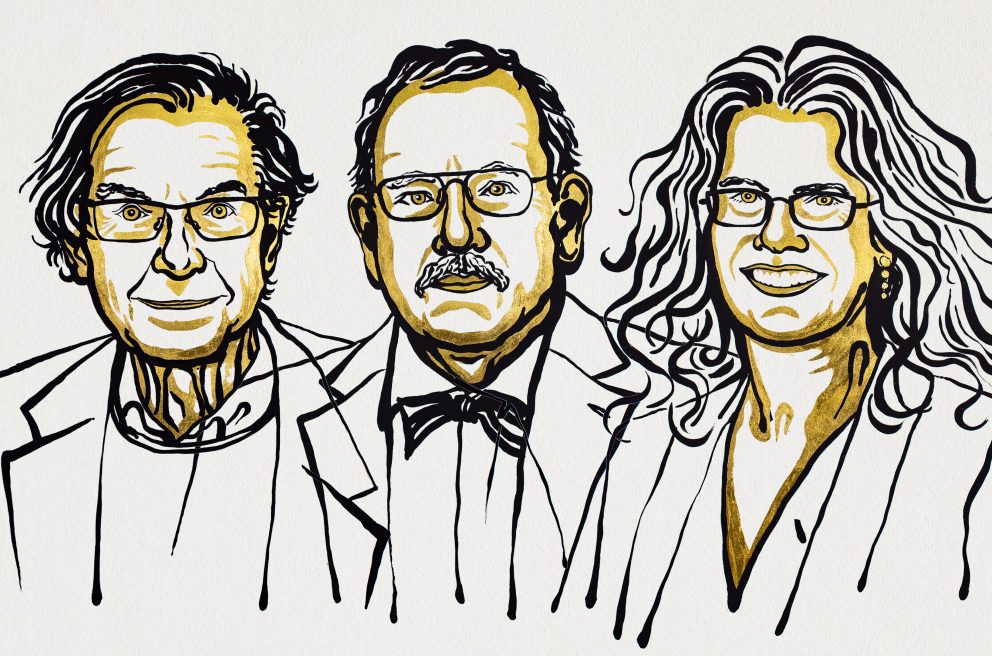The Nobel Prize in Physics has been awarded 114 times to 216 Nobel Laureates between 1901 and 2020. John Bardeen is the only Nobel Laureate who has been awarded the Nobel Prize in Physics twice, in 1956 and 1972. This means that a total of 215 individuals have received the Nobel Prize in Physics. With the announcement of Physics Nobel Prize-2020 by The Royal Swedish Academy of Sciences on October 6, 2020 the excitement in Physics community the world over has come to an end. This year the Physics Nobel prize selection committee attention was caught by the research and discoveries related to astronomy (science of space) i.e. understanding space secrets instead of research on topics related to ground. The prize is awarded to the research in the field of black holes as an authentication of Einstein’s theory of general relativity and advancing our understanding of black holes. According to Nobel committee, the prizes celebrate one of the most exotic objects in the universe, black holes, which have become a staple of science fiction and science fact and where time even seems to stand still.
The Royal Swedish Academy of Sciences has decided to award the 2020 Nobel Prize in Physics with one half to Prof.Roger Penrose (University of Oxford, UK) “for the discovery that black hole formation is a robust prediction of the general theory of relativity” and the other half jointly to Prof. Reinhard Genzel (Max Planck Institute for Extraterrestrial Physics, Garching, Germany and University of California, Berkeley, USA) and Prof. Andrea Ghez (University of California, Los Angeles, USA) “for the discovery of a supermassive compact object at the centre of our galaxy”. Prof. Andrea Ghez has become the fourth woman to get the Physics Nobel Prize following: Marie Curie in 1903, Maria Goeppert-Mayer (1963), and Donna Strickland (2018).
Roger Penrose invented ingenious mathematical methods to explore Albert Einstein’s general theory of relativity. He showed that the theory leads to the formation of black holes, those monsters in time and space that capture everything that enters them.Penrose proved with mathematics that the formation of black holes was possible, based heavily on Albert Einstein’s general theory of relativity. Reinhard Genzel and Andrea Ghez discovered that an invisible and extremely heavy object governs the orbits of stars at the centre of our galaxy. A supermassive black hole is the only currently known explanation.Genzel and Ghez looked at the dust-covered centre of our Milky Way galaxy where something strange was going on, several stars moving around something they couldn’t see.It was a black hole. Not just an ordinary black hole, but a supermassive black hole, 4 million times the mass of our sun.Now scientists know that all galaxies have supermassive black holes.
In January 1965, ten years after Einstein’s death, Roger Penrose proved that black holes really can form and described them in detail; at their heart, black holes hide a singularity in which all the known laws of nature cease. His groundbreaking article is still regarded as the most important contribution to the general theory of relativity since Einstein.Reinhard Genzel and Andrea Ghez each lead a group of astronomers that, since the early 1990s, has focused on a region called Sagittarius A at the centre of our galaxy. The orbits of the brightest stars closest to the middle of the Milky Way have been mapped with increasing precision. The measurements of these two groups agree, with both finding an extremely heavy, invisible object that pulls on the jumble of stars, causing them to rush around at dizzying speeds. Around four million solar masses are packed together in a region no larger than our solar system.Using the world’s largest telescopes, Genzel and Ghez developed methods to see through the huge clouds of interstellar gas and dust to the centre of the Milky Way. Stretching the limits of technology, they refined new techniques to compensate for distortions caused by the Earth’s atmosphere, building unique instruments and committing themselves to long-term research. Their pioneering work has given us the most convincing evidence yet of a supermassive black hole at the centre of the Milky Way.The discoveries of this year’s Laureates have broken new ground in the study of compact and supermassive objects. But these exotic objects still pose many questions that beg for answers and motivate future research. Not only questions about their inner structure, but also questions about how to test our theory of gravity under the extreme conditions in the immediate vicinity of a black hole.
